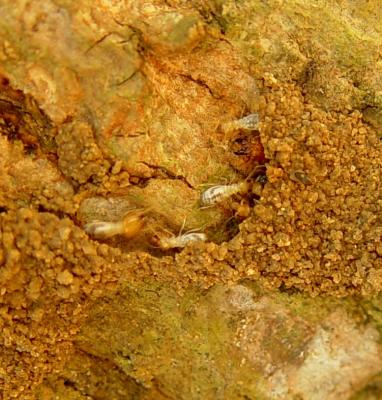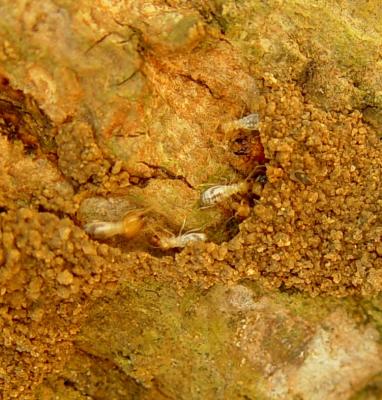

Termites (Odontotermes spp., Microtermes natalensis, Pseudocanthotermes militaris)
Termites feed on woody roots, branches and stems. The most damaging termites are those that attack living wood. They enter through the roots and work their way upward, finally destroying the heartwood. Stem beneath the soil is ring barked and the entire root system may be destroyed. Above-ground symptoms include wilting leaves and a poorly-growing plant. They occur most frequently on newly established plantations. Severely attacked plants wilt and die. Older plants may shed leaves. In most cases only a few plants are affected. Damage by termites to roots and stems of older plants can assume economic levels. A heavy infestation of termites that attack live wood can reduce yields by 10-15%. It may even kill large mature tea bushes. Termites that eat only dead wood do not cause direct damage, but they may make the plant more susceptible to fungal diseases.
- Remove stumps and dead trees (including their roots) when clearing land to plant a new tea field.
- Monitor crop regularly. Once a tea bush becomes infested, observe if the termites are eating living wood or only dead wood (wood already killed by sunscorch, die-back after pruning, or diseases).
- If the termites are eating living wood spray with an accepted insecticide. Neem products are reported to control termites. At pruning time, cut the branches back so that you expose at least 2 openings into the nest inside the trunk. Then, spray the insecticide into the nest. Spray immediately after pruning, because the termites will quickly block up the openings with mud.
- Dig up and burn infested bushes, and replant. Before replanting, check to make sure that neighbouring bushes are not infested.
- If the termites are eating only dead wood, prune off infested branches and clean away any sawdust or mud tunnels from the surface of the tree.
- If possible, find and destroy the nests (nests will be located in the soil or in a dead tree).
